calsfoundation@cals.org
Magness (Independence County)
| Latitude and Longitude: | 35°42’08″N 091°28’49″W |
| Elevation: | 276 feet |
| Area: | 0.61 square miles (2020 Census) |
| Population: | 220 (2020 Census) |
| Incorporation Date: | October 26, 1906 |
Historical Population as per the U.S. Census:
|
1810 |
1820 |
1830 |
1840 |
1850 |
1860 |
1870 |
1880 |
1890 |
1900 |
|
– |
– |
– |
– |
– |
– |
– |
– |
– |
– |
|
1910 |
1920 |
1930 |
1940 |
1950 |
1960 |
1970 |
1980 |
1990 |
2000 |
|
216 |
199 |
179 |
226 |
229 |
140 |
139 |
196 |
158 |
191 |
|
2010 |
2020 | ||||||||
|
202 |
220 |
The community of Magness is located on Highway 69 roughly between Batesville (Independence County) and Newport (Jackson County). Magness started out around 1882 as a depot for the St. Louis, Iron Mountain and Southern Railroad (a.k.a. Iron Mountain). A community emerged along the tracks by the depot, and the citizens decided to name it Magness in honor of Colonel Morgan Magness and his son, William Denton Magness, early settlers to the area who were instrumental in securing the right-of-way for the railroad.
Colonel Morgan Magness and his family lived on Miller’s Creek northwest of Batesville, having moved from Tennessee in 1812, the year the Missouri Territory (of which present-day Arkansas was a part) was carved out of the Louisiana Territory. His older brother, Perry Green “Peregrin” Magness, was in 1816 a member of the Missouri General Assembly from Lawrence County, from which Independence County would be created. In 1821, Peregrin Magness was appointed by the governor of Arkansas Territory, James Miller, as one of the commissioners “to point out and fix upon the most suitable place in said county (Independence) for erecting a courthouse and jail.” In 1825, Colonel Morgan Magness was appointed one of three men to survey a route from Little Rock (Pulaski County) to Fort Gibson in present-day Oklahoma, and he served as magistrate from Black River Township in 1829.
By the eve of the Civil War, Colonel Magness had become the richest man in Independence County, owning nearly 4,000 acres of land and fifty-eight slaves, according to property assessment records. His plantation was in the bottoms along the Black and White rivers. He was a Whig in politics and initially opposed secession, but later, through the efforts of his son, William Denton Magness, he became a Southern Democrat, serving in the Arkansas House of Representatives for several years. He died in 1871 and is buried in the Magness Cemetery.
Col. Magness had a one-room school along Big Creek for his slaves (his own children received private instruction). In 1875, a public school was constructed, and a larger building was provided in 1905 as the enrollment increased with the coming of the railroad. During the massive school consolidation of 1949 in Arkansas, the Magness school merged with Newark (Independence County), with the elementary students staying in Magness until 1954. In 2003, Newark was consolidated with the Cord-Charlotte School District to create the Cedar Ridge School District.
In 1900, the post office was established, with Thomas Morgan Waldrip, grandson of Col. Magness, appointed the first postmaster. It was first located in the Thomas Jones Dry Goods Store. In 1954, the post office burned, and M. C. Todd established a new post office complex in two buildings along the railroad tracks. Todd and his family lived in one, and the post office was in the other. Todd ran the post office until his death in 1973. The post office is still active today.
The first business, a general store, opened in the 1880s. Aldridge and Company was owned and operated by John W. Aldridge, who farmed and engaged in the mercantile business. His wife, Amanda Louise Waldrip, whose father was involved in that trade, was a significant influence on him. The business became Ladd and Lewis in 1904. By 1937, there was a specialty store for ladies, owned and operated by Nora Freeze.
The town was incorporated in 1906 with a large-scale celebration that included the shooting of anvils (the practice of firing an anvil into the air with gunpowder). A huge boon to the economy of Magness and the surrounding area was the expansion of the Tennessee Eastman Corporation (TEC) and Eastman Chemical Company of Kingsport, Tennessee, into a new plant on Gap Road in the Magness Township in the 1970s. Added to this economic growth came one of the state’s largest electric steam-generating plants built in nearby Newark in the 1980s. The $525.9 million Independence Steam Electric Station generated power from low-sulfur coal.
Besides the farming of rice and other grains in the bottomlands south of Magness, poultry has been an important means of livelihood since the 1940s and 1950s. Col. Magness was a successful stockman as well as farmer, and livestock continues to play an important role in the Magness economy. Nearby Batesville and Newport provide additional jobs and markets for Magness.
For additional information:
Biographical and Historical Memoirs of Northeast Arkansas. Chicago: Goodspeed Publishing Co., 1889.
Campbell, Jack MacGregor. “The Extraordinary Life and Times of Col. Morgan Magness.” Independence County Chronicle 58 (January 2017): 47–70.
McGinnis, A. C. “A History of Independence County, Ark.” Special issue. Independence County Chronicle 17 (April 1976).
White, Lonnie. “James Miller: Arkansas’ First Territorial Governor.” Arkansas Historical Quarterly 19 (Spring 1960): 12–30.
Kenneth Rorie
Van Buren, Arkansas
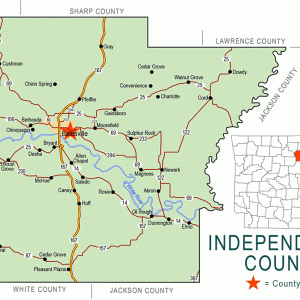 Independence County Map
Independence County Map  Entering Magness
Entering Magness  Morgan Magness
Morgan Magness 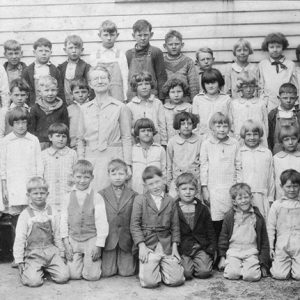 Magness School
Magness School 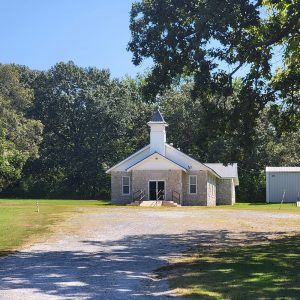 Magness Church
Magness Church 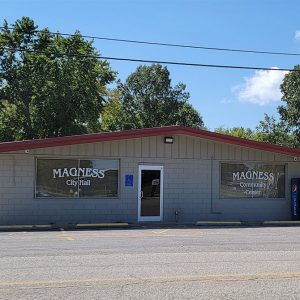 Magness City Hall
Magness City Hall 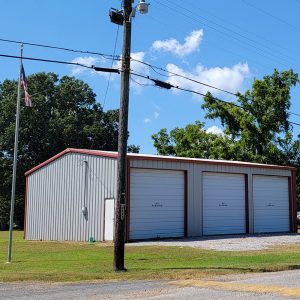 Magness Fire Department
Magness Fire Department 



Comments
No comments on this entry yet.